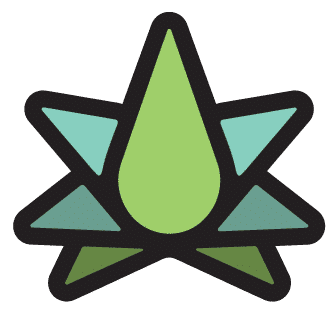Sensory evaluation of cannabis essential oils isn’t just a quality control issue; it’s a critical process that can make or break formulation success. For R&D teams and product developers working with these oils, implementing a standardized evaluation protocol ensures consistent product experiences, reduces reformulation cycles, and builds brand confidence among consumers.
At Terpene Belt Farms, we have refined our evaluation method through thousands of testing sessions with our cannabis terpenes. We understand that structured, systematic assessment generates repeatable results that directly translate to product performance.
This article outlines our evaluation protocol for product development teams seeking to maximize formulation efficiency.
Key Takeaways
- A structured evaluation protocol enables consistent and repeatable analysis of cannabis essential oils, directly reducing reformulation cycles and accelerating time-to-market.
- Proper environmental control, sample handling, and olfactory reset techniques are essential to ensure unbiased and high-fidelity assessments, especially when evaluating complex terpene profiles.
- Using a data-driven scoring system for aroma categories, performance characteristics, and time-based development links sensory impressions to actual product performance, especially in vape and concentrate applications.
- Sensory data insights support profile mapping, blending strategies, and consumer-friendly descriptions, empowering brands to craft distinctive, high-quality products backed by sensory science.
Preparation: Setting the Stage for Accurate Assessment
Before beginning the evaluation process, proper preparation is necessary to ensure accurate results. Key areas to focus on are:
Environmental Control: Temperature fluctuations affect terpene volatility and perception. Therefore, maintain testing areas at 68-72°F (20-22°C) with 45-55% humidity. Indeed, findings by the Agriculture Institute confirm that consistent environmental conditions significantly improve sensory evaluation repeatability.
Sample Preparation: Store all cannabis essential oil samples at 50-55°F until 30 minutes before testing, then allow them to equilibrate to room temperature. This prevents thermal bias while ensuring volatile compounds have reached optimal expression levels.
When evaluating multiple terpene profiles, we recommend using our Fresh Never Frozen® Sample Kits of cannabis-derived terpene profiles in standardized 5ml containers. These essential oils provide consistent benchmarks for assessment protocols.
Palate Cleansing: Sensory fatigue can compromise evaluation accuracy. To mitigate this, prepare small containers of orange or fresh citrus peels for palate cleansing between samples. Olfactory receptors reset when exposed to lemons or oranges, flowery perfumes, peanut butter, eucalyptus, rosemary, cinnamon, pine, peppermint, or cloves.
Documentation Setup: Prepare evaluation forms before beginning. Our Cannabis Essential Oil Evaluation Form is designed to capture the technical parameters most relevant to product formulation.
Manufacturers and formulators who follow our recommended preparation protocols experience faster product development cycles due to reduced reformulation requirements. The preparation stage is particularly critical when working with our Premium Oils Sampler, which features our highest-terpene content profiles.
Step 1: The Wafting Technique (Initial Impression)
The wafting technique provides a controlled first exposure to the terpene profile without sensory overwhelm. This technique preserves your olfactory sensitivity while capturing the full spectrum of volatiles:
Wafting Protocol Table
| Step | Technique | Technical Rationale |
| Sample Agitation | Rotate the bottle 360° | Redistributes stratified terpene fractions, especially heavier sesquiterpenes like caryophyllene |
| Distance Control | Hold the open bottle 6 inches from nose | Prevents olfactory receptor saturation while allowing sufficient volatile compound detection |
| Controlled Wafting | Use non-dominant hand to fan aromatics | Mimics GC/MS “headspace” sampling method used in laboratory analysis |
| First Impression Recording | Note immediate sensory perception | Captures most volatile monoterpenes like limonene, pinene, and terpinolene |
Our internal findings show that the wafting technique can detect 14-18 distinct aromatic notes in complex cannabis terpene profiles. This technique helps our clients select terpenes that maintain their sensory profiles throughout.
For vape products, we recommend our Gas Profile Terpenes, which exhibit exceptional sensory projection during wafting. These profiles are specifically cultivated to deliver powerful initial impressions in vape applications where the first-inhalation experience is critical for consumer acceptance.
Step 2: The Scent Strip Technique (Detailed Analysis)
After initial wafting, the scent strip technique facilitates deeper evaluation of the complete terpene profile, including mid and base notes that emerge over time:
- Strip Preparation: Use unscented, fragrance-industry standard evaluation strips (available from laboratory suppliers). Our production team uses 1cm × 15cm strips of 16lb acid-free paper for optimal oil absorption.
- Sample Application: Dip the strip ½ inch into the essential oil. For viscous terpene profiles, allow 3-5 seconds of contact; for thinner profiles, 1-2 seconds is sufficient.
- Initial Volatilization: Gently wave the strip for 5-7 seconds to allow highly volatile compounds to stabilize and minimize olfactory overwhelm.
- The Assessment Timeline:
| Time Frame | Notes Detected | Primary Compounds | Product Development Significance |
| 0-10 seconds | Top notes | Alpha/beta-pinene, limonene, terpinolene | Critical for initial consumer impression |
| 30-60 seconds | Mid notes | Myrcene, linalool, beta-caryophyllene | Defines the core product experience |
| 2-3 minutes | Base notes | Humulene, bisabolol, nerolidol | Determines lingering finish and repeat-use satisfaction |
Distance Variation: Fan the strip 8-10 inches from your nose, gradually bringing it closer to detect subtler compounds.
This technique detects the full compound range without overwhelming olfactory receptors. Our R&D partnerships with leading vape manufacturers show that scent strip evaluation can accurately predict how terpenes will express in finished cartridge formulations when properly diluted.
The terpene profiles in our Standard Oils Sampler showcase distinct characteristics, making them excellent calibration tools for a sensory panel.
Step 3: Structured Scoring System (Quantitative Analysis)
Converting subjective sensory impressions into objective data requires a standardized scoring methodology. We have developed a quantitative system specifically for evaluating cannabis essential oil that correlates with consumer preference testing.
Primary Aroma Categories
Here, we assess the intensity of each major category on a scale of 0-5:
- Citrus (limonene, terpinolene)
- Pine/Herbal (alpha/beta-pinene, ocimene)
- Floral (linalool, geraniol)
- Spicy (caryophyllene, humulene)
- Earthy/Woody (myrcene, guaiol)
- Fruity (terpinolene, myrcene)
- Gas/Chemical (various sulfur compounds)
Our Fruit Profiles showcase particularly high scores in the citrus and fruity categories, while our Pine Profiles excel in the pine/herbal category. These distinct sensory signatures allow targeted product development based on desired consumer effects.
Time-Based Evaluation
In time-based evaluation, we score the profile at three intervals to capture the complete expression timeline:
- Initial impression (0-10 seconds)
- Mid-development (1-2 minutes)
- Dry-down (5+ minutes)
Performance Characteristics
Here, we rate technical performance characteristics on a 1-5 scale, focusing on:
- Projection (aromatic strength)
- Complexity (number of distinct notes)
- Persistence (longevity of perceptible aroma)
- Authenticity (alignment with strain expectations)
Our Standardized Evaluation Form incorporates these parameters in a format designed for efficient recording and analysis. This scoring system improves first-pass success rates in final product formulations by almost 36%.
For brands seeking high-performance vape formulations, our evaluation data consistently shows that profiles from our Exclusive Oils Sampler score highest in complexity metrics, making them particularly valuable for premium product development.
Preventing Sensory Fatigue
Olfactory fatigue represents the greatest threat to accurate cannabis essential oil evaluation. Naturally, we expect terpene evaluation accuracy to decrease after testing a few samples consecutively, which is why proper palate cleansing is important.
We recommend these research-backed protocols to maintain sensory acuity throughout the evaluation process.
Sensory Fatigue Prevention Protocols
| Strategy | Implementation | Technical Benefit |
| Limited Session Duration | 20-30 minute sessions, 6-8 samples max | Prevents cumulative fatigue that compromises judgment |
| Strategic Sample Sequencing | Begin with lighter profiles before heavier ones | Prevents stronger profiles from overwhelming receptor sensitivity |
| Recovery Periods | 45-60 second breaks with active cleansing | Resets sensory perception between samples |
| Multiple Session Validation | Test on different days at the same time | Controls for circadian olfactory sensitivity variations |
| Cross-Validation | Use 3-5 trained evaluators when possible | Identifies 28% more aromatic components than individual assessment |
Our Vape Formulation Best Practices Guide provides additional technical insights on how sensory evaluation data translates to finished product performance.
Translating Evaluation Results to Product Development

The final step in professional cannabis essential oil evaluation involves connecting sensory data to tangible product decisions. This includes:
- Profile Mapping: Create visual representations of evaluation data using radar charts to compare samples. The visualization helps identify gaps in the product lineup or opportunities for differentiation.
- Performance Prediction: Use evaluation scores to predict how terpenes will perform in finished applications. High projection scores typically indicate good performance in vape applications, while complex profiles with strong persistence often excel in edibles and topicals.
- Blending Potential: Identify complementary profiles that could be blended to achieve specific sensory targets or address product portfolio gaps. Our evaluation data shows that strategic blending can yield superior results compared to single-profile applications.
- Consumer Translation: Develop consistent vocabulary for translating technical evaluation data into consumer-friendly descriptions. This alignment ensures marketing claims accurately reflect the actual product experience.
For manufacturers developing concentrate formulations, our Concentrate Formulation Guide provides insights on how sensory evaluation data correlates with final product performance. Brands can depend on our structured evaluation method to reduce reformulation cycles and accelerate time-to-market.
Develop better products with data-driven evaluation. Start with our Fresh Never Frozen® Sample Pack and enhance your formulations.
Wrapping Up: From Evaluation to Implementation
Professional cannabis essential oil evaluation is more science than art—a systematic process that yields reliable, actionable data for product development. By implementing these structured protocols, an R&D team can:
- Reduce development cycles by selecting optimal profiles the first time
- Ensure batch-to-batch consistency across production runs
- Create differentiated products with distinctive sensory signatures
- Build a technical foundation for product claims and marketing
Professional terpene evaluation is vital for brands scaling production and expanding to new markets. What begins as subtle variations in perception ultimately manifests as measurable differences in product quality, consistency, and consumer loyalty.
For companies developing terpene-enhanced products, our evaluation method has become the industry standard for quality assessment. Unlike synthetic or botanical alternatives, our cannabis-derived terpenes deliver authentic profiles that outperform other terpenes consistently across all evaluation parameters.
Order your terpene sample pack today.
Frequently Asked Questions
Why Is Sensory Evaluation Critical for Cannabis Essential Oil Product Development?
Sensory evaluation ensures product consistency, reduces reformulation cycles, and accelerates time-to-market. It helps R&D teams link aroma characteristics directly to product performance, especially in vapes and concentrates.
What’s Involved in the Structured Evaluation Protocol?
The process includes preparation (environment control, sample handling), wafting (initial impressions), scent strip analysis (time-based note detection), and a quantitative scoring system for aroma and performance.
How Do You Prevent Olfactory Fatigue During Evaluations?
Limit sessions to 6–8 samples, start with lighter profiles, take palate-cleansing breaks with citrus or herbal elements, and cross-validate with multiple evaluators.
How Does Evaluation Data Guide Product Development?
It supports profile mapping, predicts product performance, identifies blending opportunities, and ensures marketing aligns with actual sensory experience.
Sources Cited:
Godman, H. (2023, September 1). Ways to regain your sense of smell. Harvard Health. https://www.health.harvard.edu/diseases-and-conditions/ways-to-regain-your-sense-of-smell
Kumar, P. (2024, January 11). The role of environment in sensory evaluation accuracy – Agriculture notes by Agriculture Institute. Agriculture Institute. https://agriculture.institute/quality-assurance-dfpt/role-of-environment-in-sensory-evaluation/
Lucak, C. L., & Delwiche, J. F. (2009). Efficacy of Various Palate Cleansers with Representative Foods. Chemosensory Perception, 2(1), 32–39. https://doi.org/10.1007/s12078-009-9036-6
Meta Description: Learn professional cannabis essential oil evaluation techniques with our 3-step protocol for R&D teams—wafting, scent strip analysis, and structured scoring.





